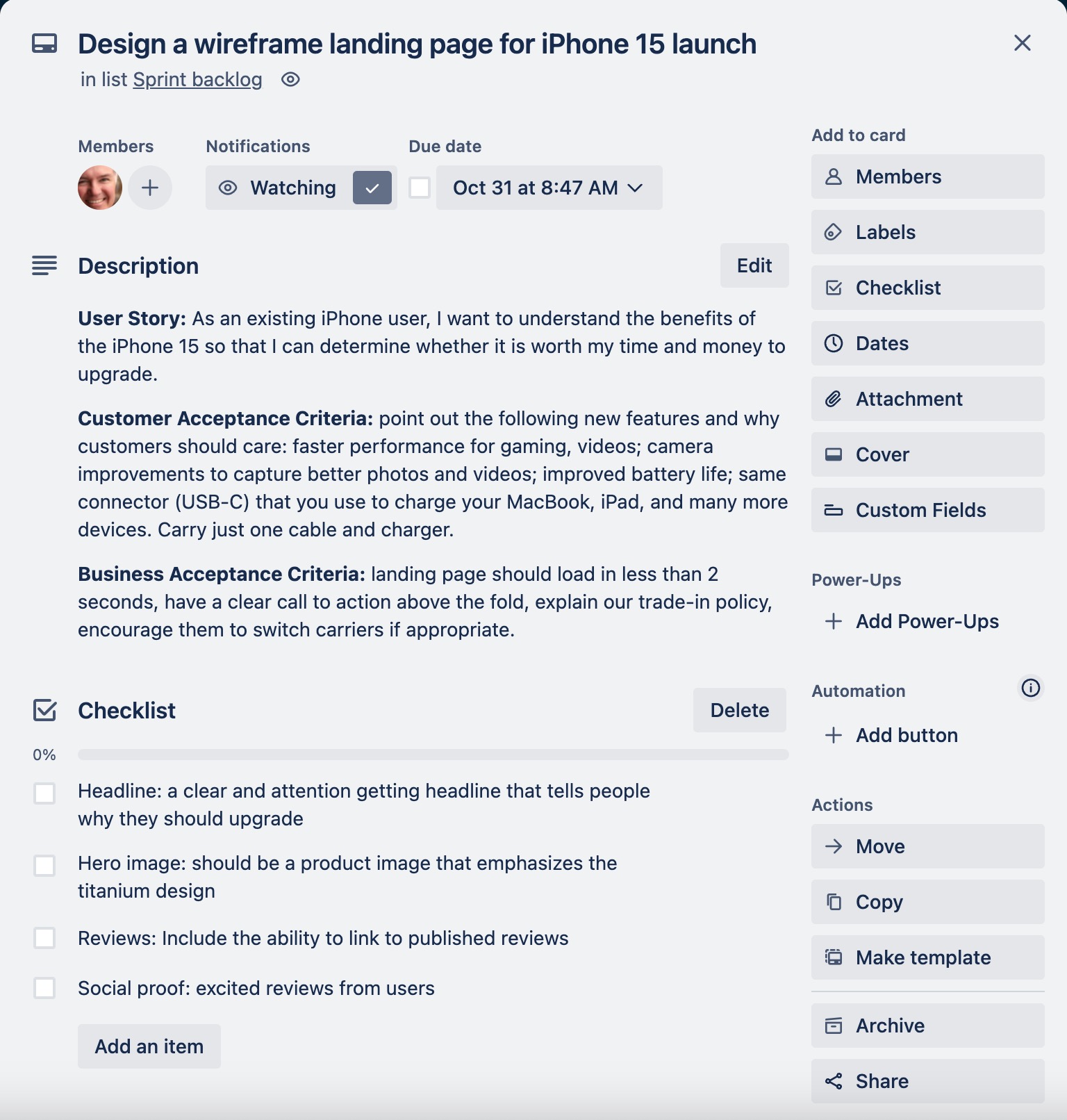Introduction
Solid Foundation Before You Begin
User Story
- Specific: Targets a particular persona at a particular part of their customer journey.
- Customer-Focused: Written from the point of view of the customer
- Actionable: Provides clear guidance for task creation.
- Relevant: Aligns with current business objectives.
- Independent: Independent of the delivery vehicle (the specific deliverable)
Customer Acceptance Criteria
Business Acceptance Criteria
Definition of Done
The Definition of Done (DoD) is a checklist of criteria that must be met for any task or deliverable to be considered complete. Where the user story, customer acceptance criteria, and business acceptance criteria apply to this particular deliverable, the DoD applies to all deliverables of a specific type. For example, a blog post’s DoD might include writing, proofreading, SEO optimization, and social media promotion.
Break Down Tasks by Marketing Specialty
When starting your task breakdown, consider the range of marketing specialties that will collaborate on the deliverable. Let’s say you’re working on a multi-page guide on Agile Marketing. To create this guide, promote it, and optimize its reach, you may need the following specialties:
- Subject Matter Expert: Provides the content backbone.
- Graphic Designer: Creates visually appealing layouts and graphics.
- Copywriter: Refines and polishes the content.
- Social Media Specialist: Handles promotion across social channels.
- Email Specialist: Manages email campaigns for the guide.
- Paid Media Creator: Designs ads for promotion.
- Paid Media Buyer: Manages ad placements.
- Videographer: Produces promotional videos.
- Video Distribution Specialist: Handles video SEO and distribution.
List all of the marketing specialties that will be required for your deliverable.
Break Down Deliverables Into Manageable Chunks
This is the hard part: breaking down your tasks into manageable chunks. Here are some tips for breaking down deliverables into manageable chunks.
- A well-defined task should take a team member one to two days to complete. Too large, and the task becomes unwieldy; too small, and the list of tasks will become too long and too trivial.
- Tasks should be broken down based on who needs to do the work. For example, if the deliverable requires graphics and copy, you will almost certainly have at least two tasks, one assigned to the graphic designer and the other to the copywriter.
- Break down the work into portions for a large deliverable requiring more than one or two days of work from a particular marketing specialist. For example, a copywriter might have the task of writing a specific section or chapter of a large document in one task and other sections or chapters in additional tasks.
- Each task should have a short checklist to ensure everyone is on the same page about the details. Document what needs to be done and what isn’t necessary. In other words, document the scope of the task.
Here is an example of a well-defined task for Agile marketing:

Review Your Foundation
Once you’ve broken down your tasks, revisit your foundational elements: user story, customer acceptance criteria, business acceptance criteria, and definition of done. Ensure everything is present and aligned and that your tasks satisfy all of the foundational elements. Double-check that your breakdown aligns with both customer needs and business goals. Add tasks or checklist items to your tasks as necessary to satisfy these foundational elements.
Iterate on the Breakdown
Agile is all about iterative improvement. Review your initial task breakdown and adjust it based on feedback and re-consideration.
Ask the team if there are any questions about the breakdown or anything that seems unnecessary. The team should be involved in creating the breakdown. If they help build it, they will better understand it and are more likely to support it and do an excellent job on it.
Conclusion
Mastering the art of task breakdown is crucial for any Agile marketing team. It starts with a solid foundation, involves thoughtful task categorization by specialty, and requires tasks to be manageable and aligned with key criteria.
How has your experience been with breaking down tasks in Agile marketing? We’d love to hear from you in the comments below.

